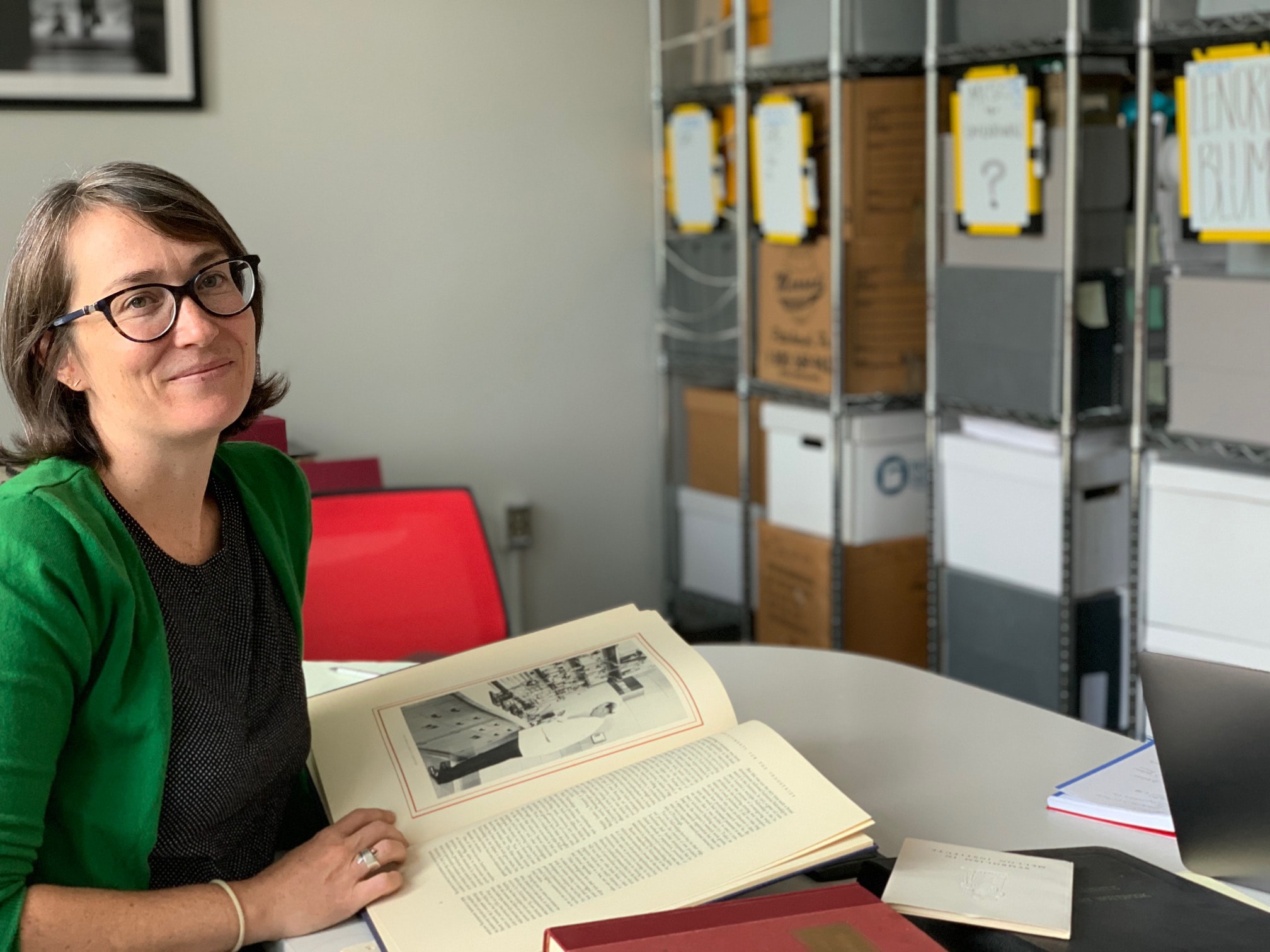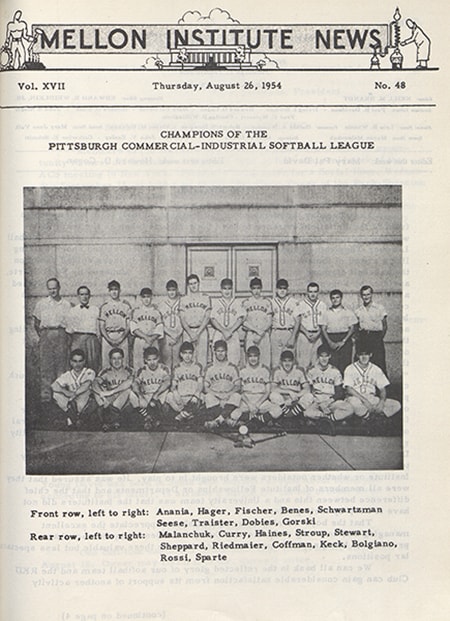Archives Digitize Decades of Mellon Institute Records
Carnegie Mellon's University Libraries have organized and preserved 347 boxes of records from the Mellon Institute of Industrial Research, one of the nation's premier independent research centers, making the records more widely discoverable and available to researchers.
"No one has written a comprehensive history on the Mellon Institute, how it factored into the larger industrial research ecosystem or its contributions to science," said Project Archivist Emily Davis, who led the digitization effort. "With the breadth of scientific and cultural news that are captured in these pages, these documents will be of interest to historians as well as people who want to learn about family members who worked there."
For decades, companies without in-house "research and development" laboratories relied on the scientists and engineers of Pittsburgh's Mellon Institute of Industrial Research to conduct cutting-edge scientific experimentation on their behalf.
In 1967, the Carnegie Institute of Techology merged with the Mellon Institute to become what is now known as Carnegie Mellon University. The institute's building is now home to the Carnegie Mellon's Mellon College of Science.
Since its inception in 1913, the Mellon Institute engaged the brightest scientific minds of its time to develop, test, and refine new chemical, biological, and materials science innovations on behalf of its corporate partners. In the process, the institute defined the profession of sponsored research, spun off successful companies such as the Dow Corning and Union Carbide corporations, and developed industry-changing technologies. It also prepared hundreds of new scientists for careers in industrial research.

Project Archivist Emily Davis led the effort to digitize the Mellon Institute's archives.
Over 650 novel processes and products were invented or developed as a result of the institute's industrial fellowship program. Through this program-created by chemist and professor Robert Kennedy Duncan and financially supported by Pittsburgh financiers Andrew W. Mellon and Richard B. Mellon-the institute solved the immediate needs of industry by employing trained scientists to investigate its problems.
"In addition to groundbreaking developments such as gas masks used in World War I, many common consumer items that we interact with every day were developed at the Mellon Institute," Davis said. "This includes products such as breakfast cereals, fertilizers, glues, inks, skinless hot dogs, frozen orange juice, razor blades, and fluoride."
The fellows also conducted numerous studies into Pittsburgh's air quality issues and concerns surrounding the occupational health of lab and factory workers. Four researchers associated with the Mellon Institute have been awarded Nobel Prizes.
Davis worked with colleagues in the Library's Digitization Projects Division to scan and create metadata for two bodies of materials that tell the story of the institute: Annual Reports from the years 1914-1967 and the institute's newsletters, "Toot-Toot" (1916-1917), "R.K.D. Bulletin" (1918-1919), "Mellon Institute News" (1937-1971), "RKD Club Columns" (1972-1974), and "Mellon Columns" 1975-1980. To make the content searchable, which enhances findability and improves accessibility, the Digitization Projects team also ran OCR software on all 26,800 pages to convert the printed text into digital text.
Both bodies of materials will give new insight into the operations of the institute. The Annual Reports outline which companies sponsored the research and summarize the activities and accomplishments of each fellowship, while the newsletters provide a window into the culture of the Mellon Institute, containing information such as hirings, retirements and rankings for the bowling and basketball teams, as well as updates from former scientists on marriages, deaths, and conference presentations. The first newsletter was published during World War I to keep members who were enlisted connected to the institute.
The newly scanned materials are available on the University Archives digital collections site.
